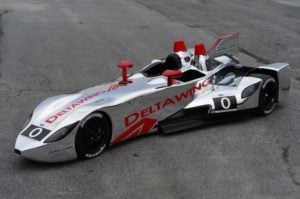- 830

- JAKARTA
- GTIC_omDidit
One of the car I am eager to drive in GT6 was the Deltawing. With it's interesting configuration I wonder how the characteristic will be.
Now that GT6 has 2 versions of it, that's exceed my expectation, thanks PD for this.
Then I testdrive this creature only to find the car always try to kill me in every corner. I have to brake only in the straightline, tried some trail braking but still with the slightest of brake feathering it will spin out horribly.
So guys do you share the same experience with this specific car ?
Any tips or storytelling is appreciated
Thanks
note: I drove it in stock condition, abs 1 only.

Now that GT6 has 2 versions of it, that's exceed my expectation, thanks PD for this.
Then I testdrive this creature only to find the car always try to kill me in every corner. I have to brake only in the straightline, tried some trail braking but still with the slightest of brake feathering it will spin out horribly.
So guys do you share the same experience with this specific car ?
Any tips or storytelling is appreciated
Thanks
note: I drove it in stock condition, abs 1 only.





